
The U.S. is currently grappling with a massive labor shortage. Due to early retirements, child care needs, and potential COVID-19 risks at work, the pandemic has pushed millions of Americans out of the workforce – and they have been slow to return.
Since the pandemic began, the labor force participation rate – defined as the share of Americans 16 and older either working or looking for work – has been stuck at multi-decade lows. The most recent data from the Bureau of Labor Statistics reveals a staggering disconnect – the number of open jobs nationwide outnumbers the number of Americans looking for work by nearly 4.3 million.
Businesses nationwide are feeling the pinch. The labor shortage poses an existential challenge for many small businesses. Even major companies like McDonald’s, Starbucks, and Macy’s have been forced to reduce their hours of operation. Broader implications include worsening supply chain issues and slowed economic growth.
As daunting as the challenge is at a national level, in some states, the problem is even worse.
Using data from the BLS, 24/7 Wall St. identified the states where businesses are running out of workers. States are ranked by the number of open jobs for every unemployed resident, or the ratio of unfilled jobs to job seekers. Nationwide, there are 1.7 unfulfilled jobs for every out-of-work job seeker. Depending on the state, this ratio ranges from 1.1-to-1 up to 6.0-to-1.
Closing the gap between supply and demand for labor will likely require an influx of people from the sidelines either joining or re-joining the labor force. This is especially true in states with low unemployment rates, where the ratio of unfilled jobs to job seekers tends to be the worst. Here is a look at the state with the highest unemployment in America.
Click here to see the states where businesses are running out of workers
Click here to read our detailed methodology

50. California
> Open-job to job-seeker ratio: 1.1-to-1
> Total open jobs: 1,118,000 (6.2% of all jobs – 6th lowest)
> Unemployed persons: 1,036,255 (5.4% of labor force – 3rd highest)
> Labor force participation rate: 61.6% of pop. age 16+ (23rd lowest)
[in-text-ad]
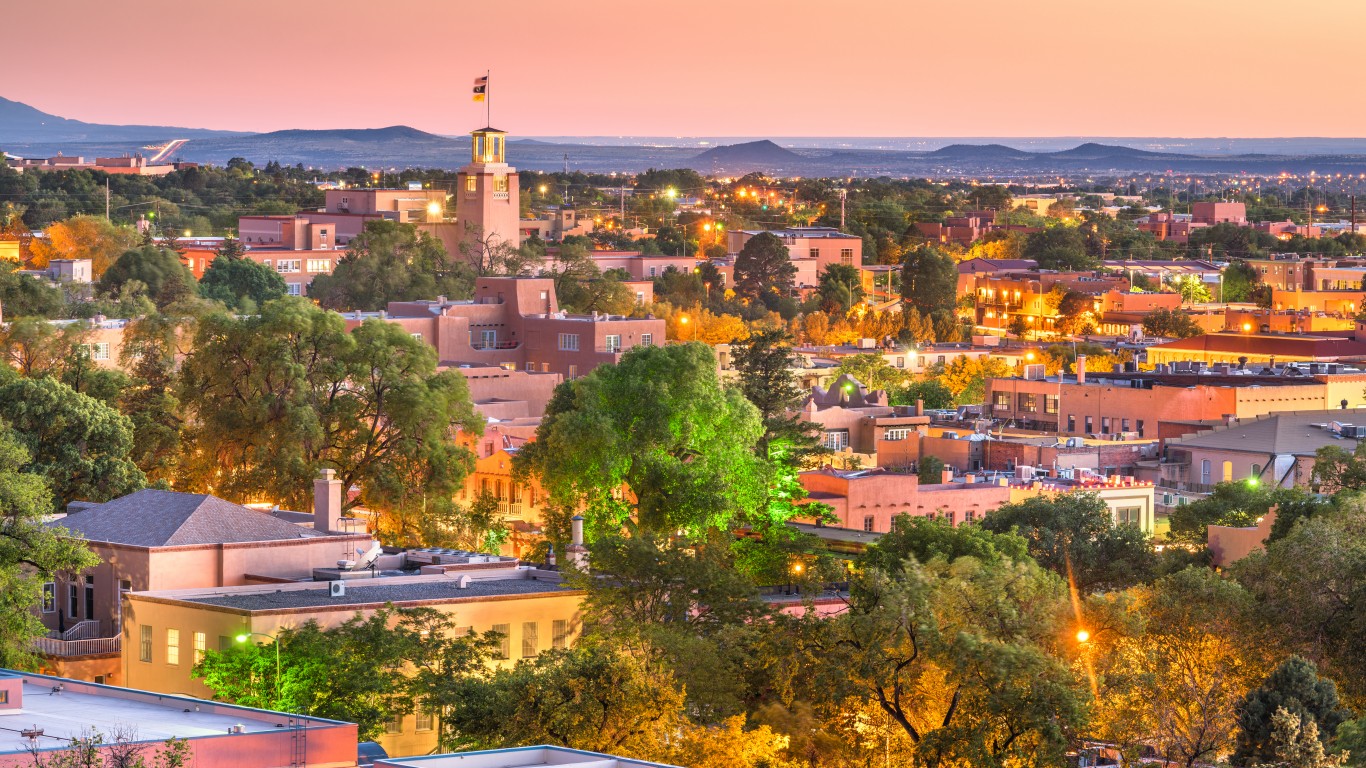
49. New Mexico
> Open-job to job-seeker ratio: 1.2-to-1
> Total open jobs: 60,000 (6.8% of all jobs – 23rd highest)
> Unemployed persons: 50,399 (5.3% of labor force – 6th highest)
> Labor force participation rate: 57.4% of pop. age 16+ (6th lowest)

48. New York
> Open-job to job-seeker ratio: 1.2-to-1
> Total open jobs: 636,000 (6.6% of all jobs – 19th lowest)
> Unemployed persons: 509,064 (5.5% of labor force – the highest)
> Labor force participation rate: 59.5% of pop. age 16+ (10th lowest)

47. New Jersey
> Open-job to job-seeker ratio: 1.3-to-1
> Total open jobs: 290,000 (6.7% of all jobs – 23rd lowest)
> Unemployed persons: 231,957 (5.2% of labor force – 7th highest)
> Labor force participation rate: 62.7% of pop. age 16+ (21st highest)
[in-text-ad-2]
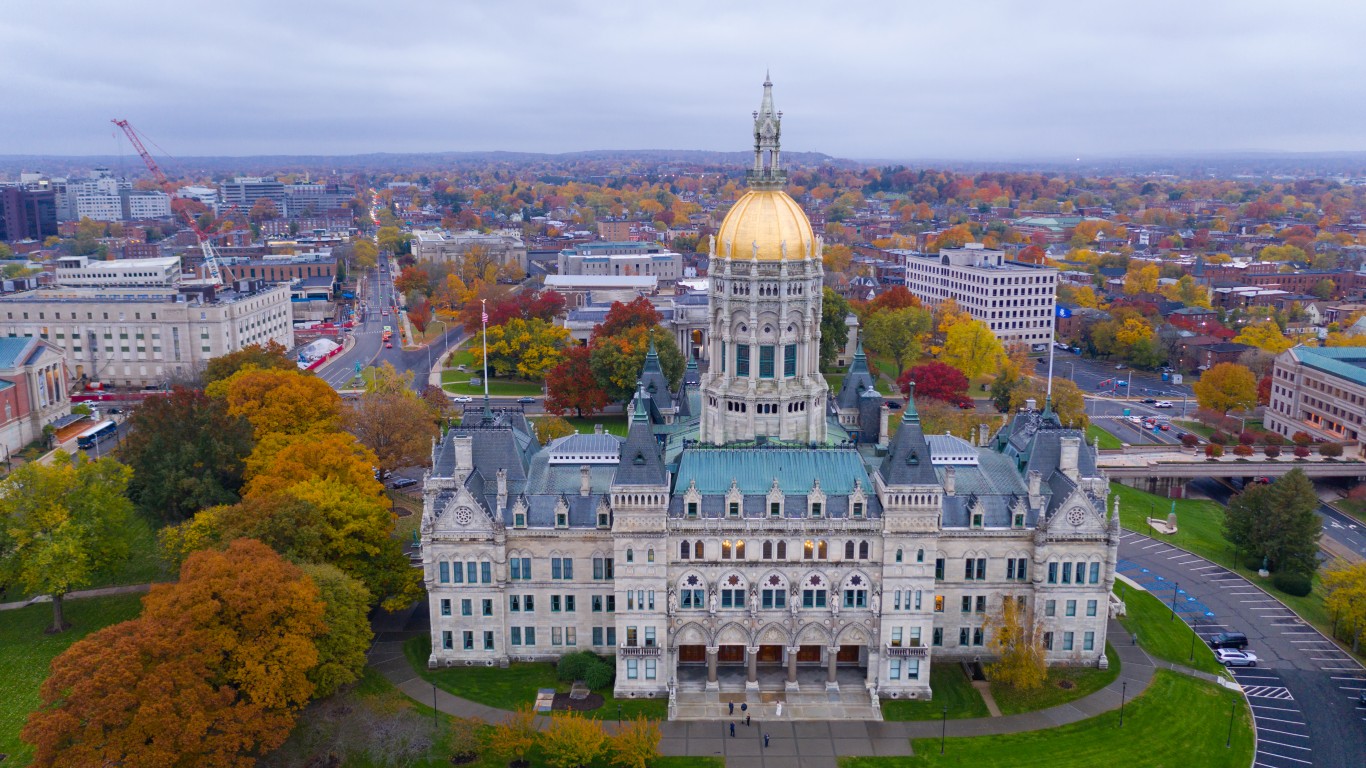
46. Connecticut
> Open-job to job-seeker ratio: 1.3-to-1
> Total open jobs: 112,000 (6.5% of all jobs – 12th lowest)
> Unemployed persons: 88,174 (4.8% of labor force – 8th highest)
> Labor force participation rate: 64.4% of pop. age 16+ (15th highest)

45. Nevada
> Open-job to job-seeker ratio: 1.3-to-1
> Total open jobs: 109,000 (7.4% of all jobs – 7th highest)
> Unemployed persons: 83,495 (5.4% of labor force – 3rd highest)
> Labor force participation rate: 60.6% of pop. age 16+ (16th lowest)
[in-text-ad]

44. Illinois
> Open-job to job-seeker ratio: 1.3-to-1
> Total open jobs: 379,000 (6.1% of all jobs – 4th lowest)
> Unemployed persons: 286,687 (4.5% of labor force – 11th highest)
> Labor force participation rate: 64.0% of pop. age 16+ (16th highest)

43. Texas
> Open-job to job-seeker ratio: 1.4-to-1
> Total open jobs: 884,000 (6.4% of all jobs – 9th lowest)
> Unemployed persons: 654,763 (4.5% of labor force – 11th highest)
> Labor force participation rate: 63.4% of pop. age 16+ (19th highest)

42. Maryland
> Open-job to job-seeker ratio: 1.4-to-1
> Total open jobs: 198,000 (6.8% of all jobs – 23rd highest)
> Unemployed persons: 143,867 (4.6% of labor force – 9th highest)
> Labor force participation rate: 65.6% of pop. age 16+ (11th highest)
[in-text-ad-2]

41. Delaware
> Open-job to job-seeker ratio: 1.4-to-1
> Total open jobs: 28,000 (5.8% of all jobs – the lowest)
> Unemployed persons: 19,500 (4.0% of labor force – 19th highest)
> Labor force participation rate: 60.9% of pop. age 16+ (20th lowest)

40. Pennsylvania
> Open-job to job-seeker ratio: 1.5-to-1
> Total open jobs: 400,000 (6.5% of all jobs – 12th lowest)
> Unemployed persons: 270,172 (4.3% of labor force – 15th highest)
> Labor force participation rate: 60.6% of pop. age 16+ (16th lowest)
[in-text-ad]
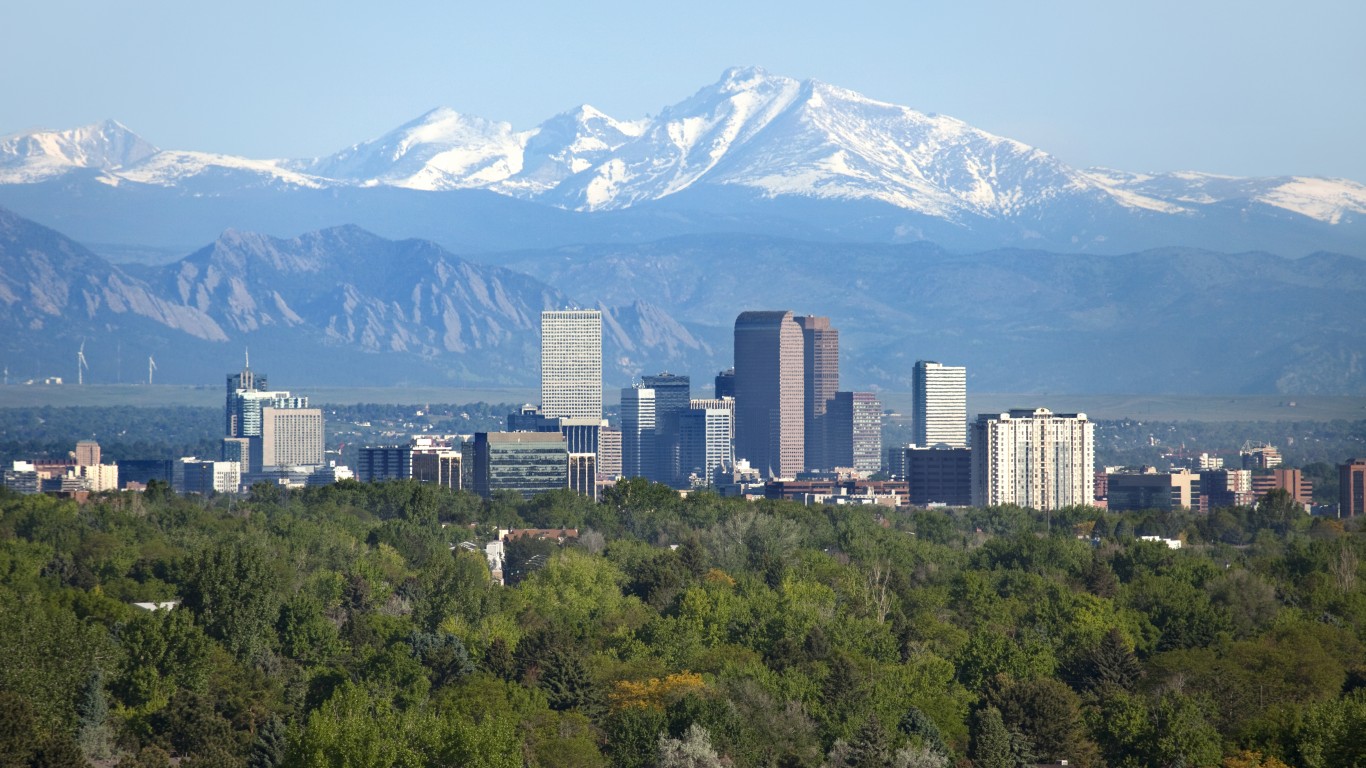
39. Colorado
> Open-job to job-seeker ratio: 1.5-to-1
> Total open jobs: 212,000 (7.1% of all jobs – 16th highest)
> Unemployed persons: 142,433 (4.4% of labor force – 13th highest)
> Labor force participation rate: 68.5% of pop. age 16+ (3rd highest)

38. Hawaii
> Open-job to job-seeker ratio: 1.5-to-1
> Total open jobs: 52,000 (8.3% of all jobs – 2nd highest)
> Unemployed persons: 34,915 (5.4% of labor force – 3rd highest)
> Labor force participation rate: 60.3% of pop. age 16+ (15th lowest)

37. Alaska
> Open-job to job-seeker ratio: 1.5-to-1
> Total open jobs: 30,000 (8.8% of all jobs – the highest)
> Unemployed persons: 19,543 (5.5% of labor force – the highest)
> Labor force participation rate: 64.8% of pop. age 16+ (13th highest)
[in-text-ad-2]

36. Maine
> Open-job to job-seeker ratio: 1.5-to-1
> Total open jobs: 45,000 (6.8% of all jobs – 23rd highest)
> Unemployed persons: 29,235 (4.4% of labor force – 13th highest)
> Labor force participation rate: 59.7% of pop. age 16+ (13th lowest)

35. Louisiana
> Open-job to job-seeker ratio: 1.6-to-1
> Total open jobs: 131,000 (6.6% of all jobs – 19th lowest)
> Unemployed persons: 83,797 (4.1% of labor force – 17th highest)
> Labor force participation rate: 57.9% of pop. age 16+ (8th lowest)
[in-text-ad]
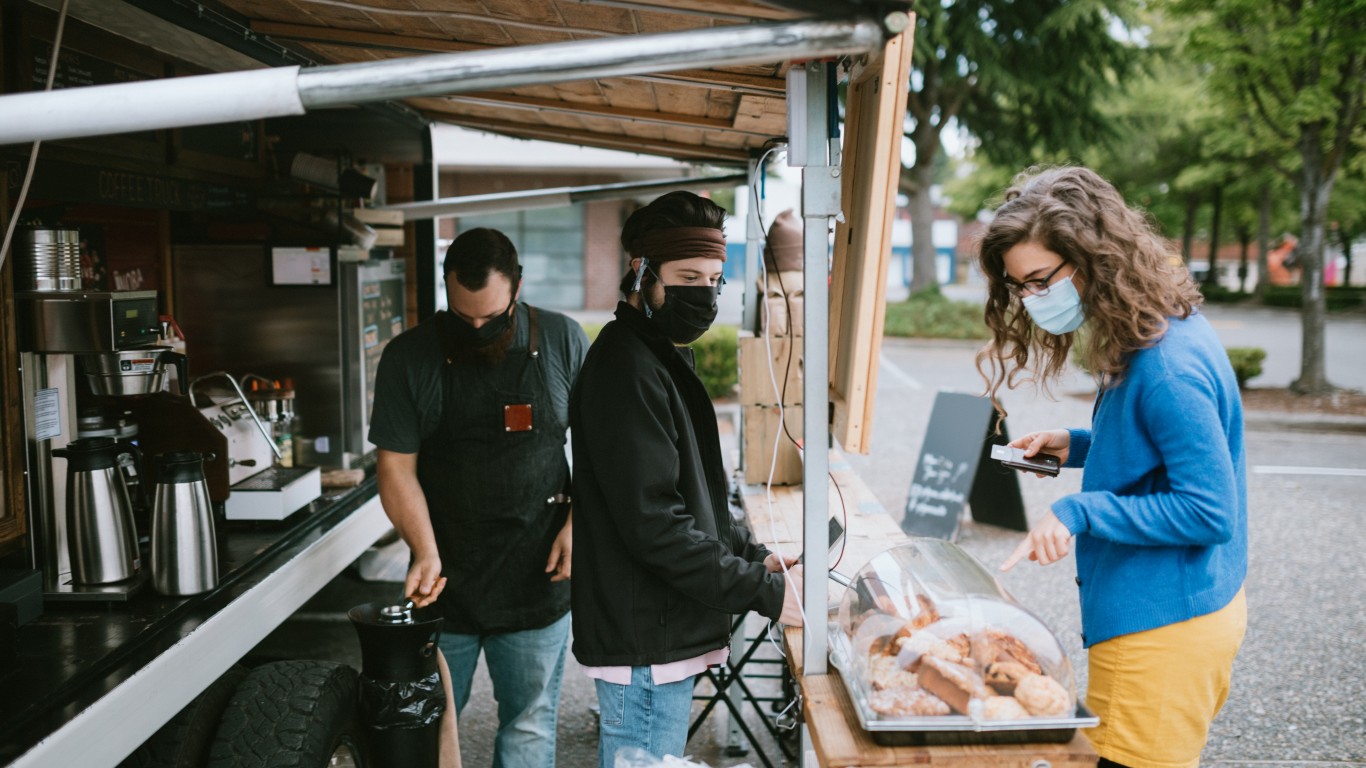
34. Washington
> Open-job to job-seeker ratio: 1.6-to-1
> Total open jobs: 221,000 (6.0% of all jobs – 2nd lowest)
> Unemployed persons: 139,929 (3.6% of labor force – 20th highest)
> Labor force participation rate: 63.6% of pop. age 16+ (17th highest)

33. Florida
> Open-job to job-seeker ratio: 1.6-to-1
> Total open jobs: 631,000 (6.6% of all jobs – 19th lowest)
> Unemployed persons: 384,837 (3.6% of labor force – 20th highest)
> Labor force participation rate: 59.4% of pop. age 16+ (9th lowest)
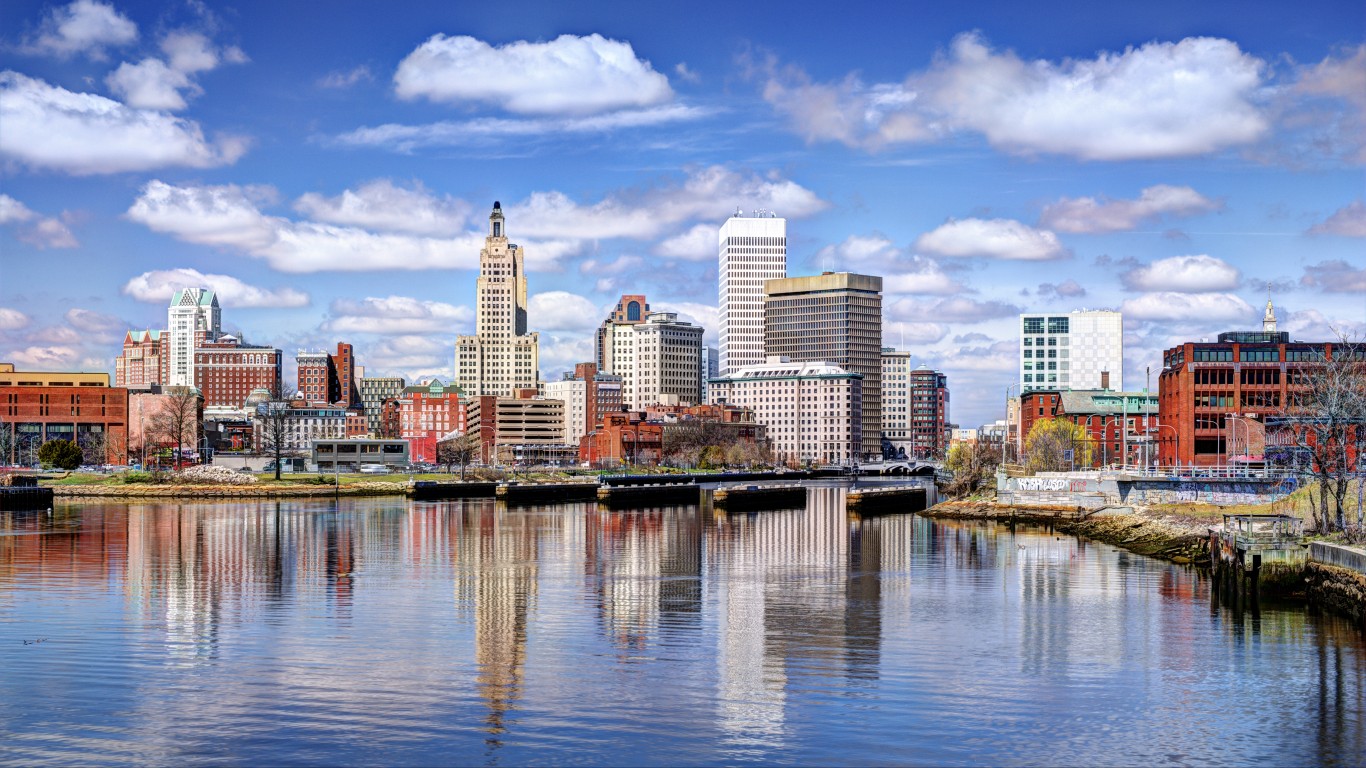
32. Rhode Island
> Open-job to job-seeker ratio: 1.6-to-1
> Total open jobs: 38,000 (7.3% of all jobs – 9th highest)
> Unemployed persons: 23,032 (4.1% of labor force – 17th highest)
> Labor force participation rate: 64.4% of pop. age 16+ (15th highest)
[in-text-ad-2]

31. Michigan
> Open-job to job-seeker ratio: 1.7-to-1
> Total open jobs: 330,000 (7.2% of all jobs – 11th highest)
> Unemployed persons: 198,407 (4.2% of labor force – 16th highest)
> Labor force participation rate: 59.6% of pop. age 16+ (11th lowest)

30. Massachusetts
> Open-job to job-seeker ratio: 1.7-to-1
> Total open jobs: 290,000 (7.5% of all jobs – 6th highest)
> Unemployed persons: 172,324 (4.6% of labor force – 9th highest)
> Labor force participation rate: 66.4% of pop. age 16+ (9th highest)
[in-text-ad]

29. Oregon
> Open-job to job-seeker ratio: 1.8-to-1
> Total open jobs: 137,000 (6.7% of all jobs – 23rd lowest)
> Unemployed persons: 74,448 (3.4% of labor force – 22nd highest)
> Labor force participation rate: 62.3% of pop. age 16+ (25th highest)

28. Arizona
> Open-job to job-seeker ratio: 1.9-to-1
> Total open jobs: 220,000 (6.8% of all jobs – 23rd highest)
> Unemployed persons: 117,309 (3.2% of labor force – 25th highest)
> Labor force participation rate: 60.7% of pop. age 16+ (18th lowest)

27. North Carolina
> Open-job to job-seeker ratio: 2.0-to-1
> Total open jobs: 338,000 (6.9% of all jobs – 20th highest)
> Unemployed persons: 170,585 (3.4% of labor force – 22nd highest)
> Labor force participation rate: 59.6% of pop. age 16+ (11th lowest)
[in-text-ad-2]

26. Ohio
> Open-job to job-seeker ratio: 2.1-to-1
> Total open jobs: 420,000 (7.2% of all jobs – 11th highest)
> Unemployed persons: 195,679 (3.4% of labor force – 22nd highest)
> Labor force participation rate: 61.3% of pop. age 16+ (22nd lowest)

25. Alabama
> Open-job to job-seeker ratio: 2.2-to-1
> Total open jobs: 146,000 (6.6% of all jobs – 19th lowest)
> Unemployed persons: 66,934 (3.0% of labor force – 24th lowest)
> Labor force participation rate: 57.6% of pop. age 16+ (7th lowest)
[in-text-ad]

24. Mississippi
> Open-job to job-seeker ratio: 2.2-to-1
> Total open jobs: 81,000 (6.6% of all jobs – 19th lowest)
> Unemployed persons: 37,085 (3.0% of labor force – 24th lowest)
> Labor force participation rate: 54.7% of pop. age 16+ (the lowest)

23. Kentucky
> Open-job to job-seeker ratio: 2.2-to-1
> Total open jobs: 137,000 (6.8% of all jobs – 23rd highest)
> Unemployed persons: 61,406 (3.0% of labor force – 24th lowest)
> Labor force participation rate: 57.2% of pop. age 16+ (5th lowest)

22. Tennessee
> Open-job to job-seeker ratio: 2.3-to-1
> Total open jobs: 232,000 (6.9% of all jobs – 20th highest)
> Unemployed persons: 102,585 (3.1% of labor force – 25th lowest)
> Labor force participation rate: 60.2% of pop. age 16+ (14th lowest)
[in-text-ad-2]

21. South Carolina
> Open-job to job-seeker ratio: 2.4-to-1
> Total open jobs: 170,000 (7.3% of all jobs – 9th highest)
> Unemployed persons: 72,000 (3.0% of labor force – 24th lowest)
> Labor force participation rate: 56.6% of pop. age 16+ (3rd lowest)

20. Iowa
> Open-job to job-seeker ratio: 2.4-to-1
> Total open jobs: 104,000 (6.3% of all jobs – 7th lowest)
> Unemployed persons: 44,028 (2.6% of labor force – 19th lowest)
> Labor force participation rate: 67.0% of pop. age 16+ (7th highest)
[in-text-ad]

19. Kansas
> Open-job to job-seeker ratio: 2.5-to-1
> Total open jobs: 95,000 (6.4% of all jobs – 9th lowest)
> Unemployed persons: 38,400 (2.6% of labor force – 19th lowest)
> Labor force participation rate: 66.7% of pop. age 16+ (8th highest)

18. Virginia
> Open-job to job-seeker ratio: 2.6-to-1
> Total open jobs: 301,000 (7.0% of all jobs – 18th highest)
> Unemployed persons: 115,438 (2.7% of labor force – 20th lowest)
> Labor force participation rate: 63.0% of pop. age 16+ (20th highest)
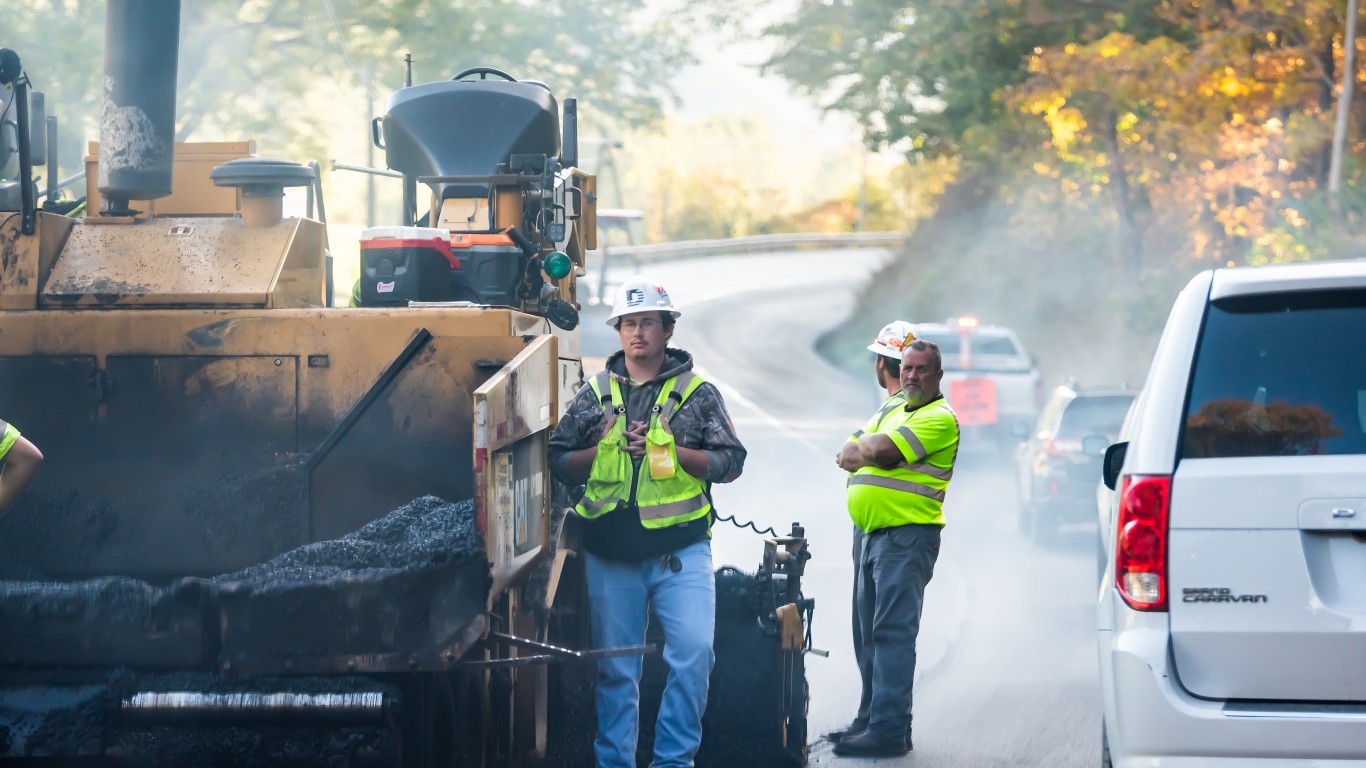
17. West Virginia
> Open-job to job-seeker ratio: 2.7-to-1
> Total open jobs: 55,000 (7.4% of all jobs – 7th highest)
> Unemployed persons: 20,498 (2.6% of labor force – 19th lowest)
> Labor force participation rate: 54.7% of pop. age 16+ (the lowest)
[in-text-ad-2]
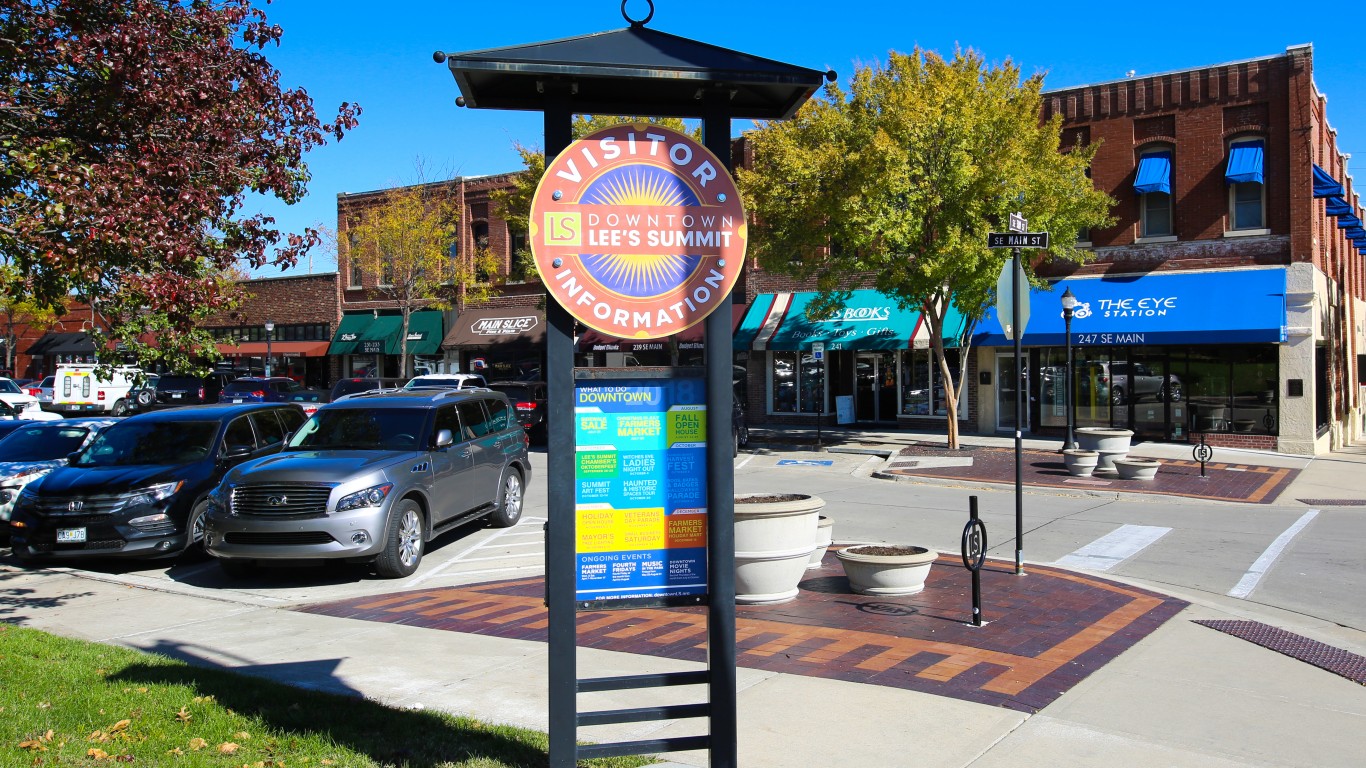
16. Missouri
> Open-job to job-seeker ratio: 2.8-to-1
> Total open jobs: 221,000 (7.2% of all jobs – 11th highest)
> Unemployed persons: 77,811 (2.6% of labor force – 19th lowest)
> Labor force participation rate: 62.4% of pop. age 16+ (23rd highest)
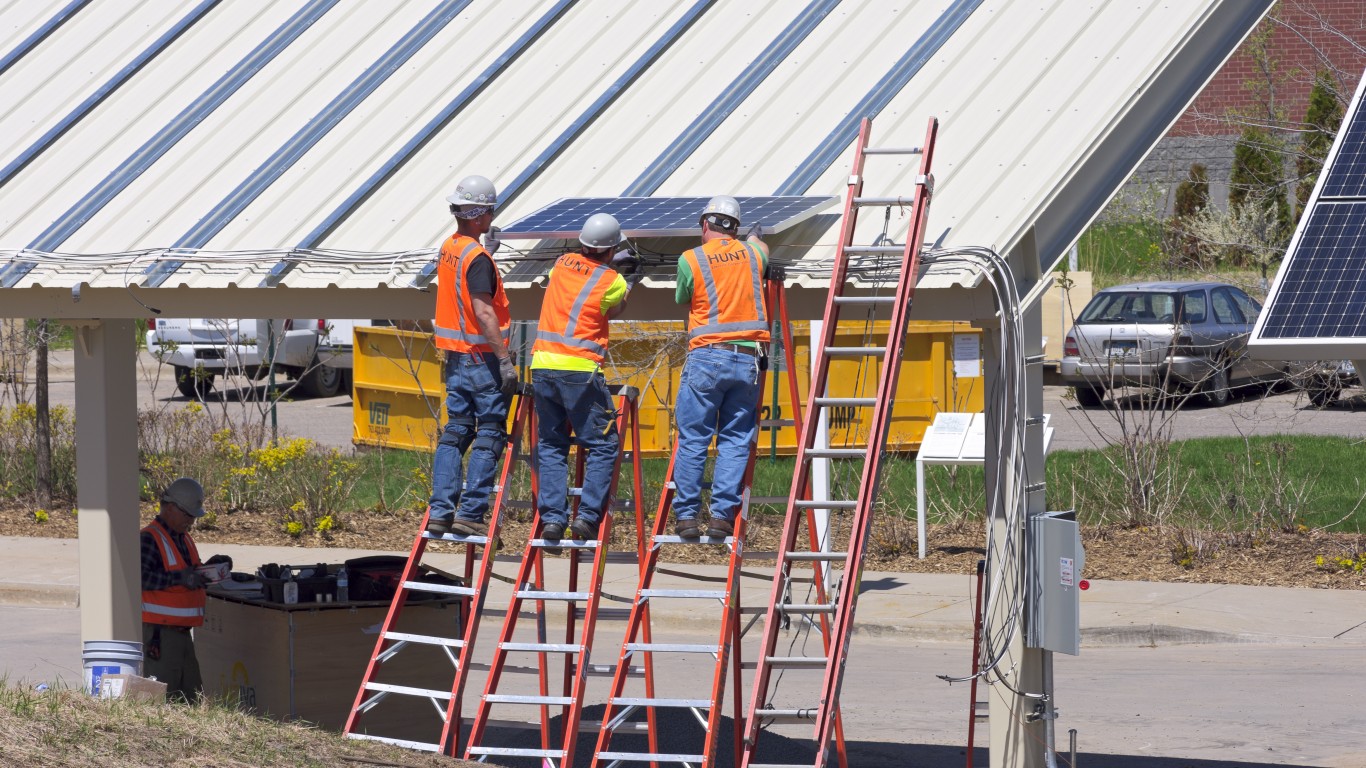
15. Minnesota
> Open-job to job-seeker ratio: 2.8-to-1
> Total open jobs: 189,000 (6.1% of all jobs – 4th lowest)
> Unemployed persons: 66,467 (2.2% of labor force – 13th lowest)
> Labor force participation rate: 67.6% of pop. age 16+ (6th highest)
[in-text-ad]

14. Arkansas
> Open-job to job-seeker ratio: 2.9-to-1
> Total open jobs: 85,000 (6.2% of all jobs – 6th lowest)
> Unemployed persons: 29,608 (2.2% of labor force – 13th lowest)
> Labor force participation rate: 56.9% of pop. age 16+ (4th lowest)
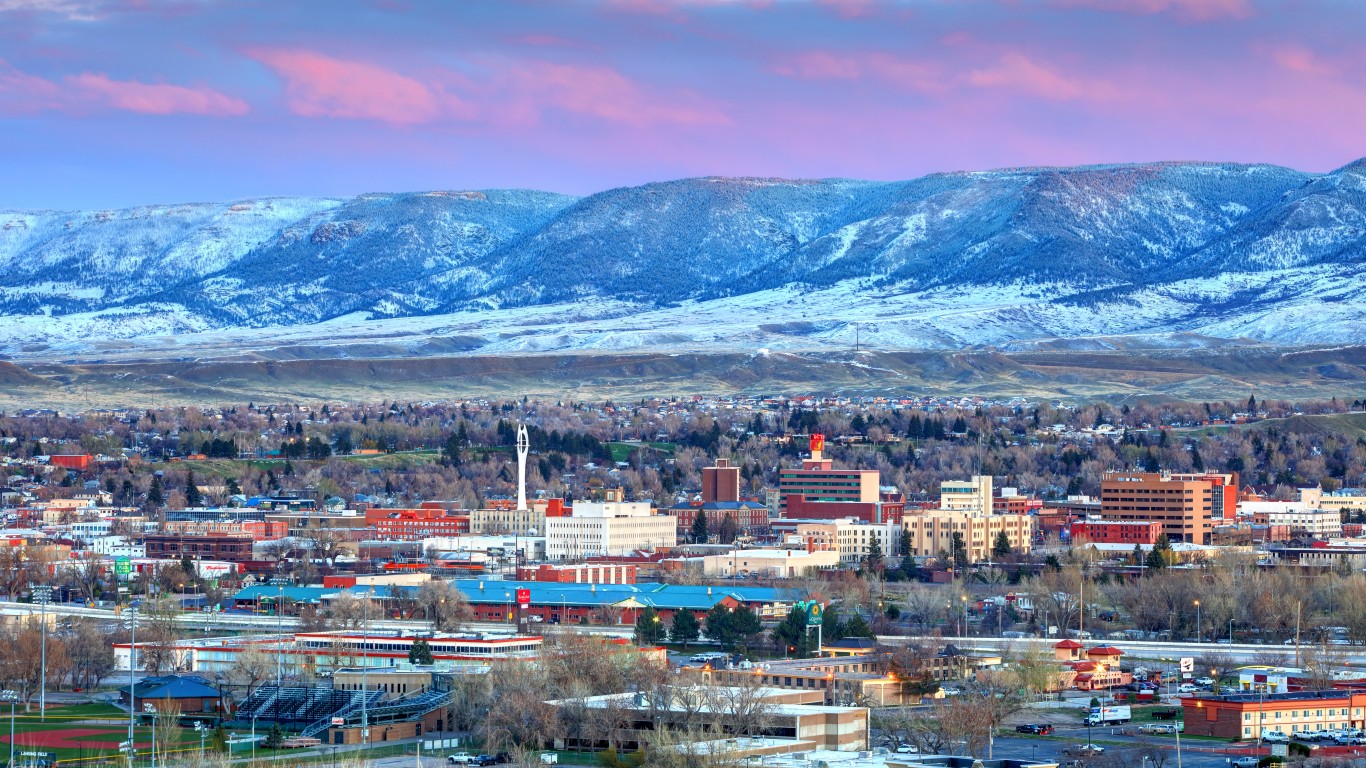
13. Wyoming
> Open-job to job-seeker ratio: 3.0-to-1
> Total open jobs: 21,000 (7.1% of all jobs – 16th highest)
> Unemployed persons: 6,976 (2.4% of labor force – 14th lowest)
> Labor force participation rate: 63.5% of pop. age 16+ (18th highest)
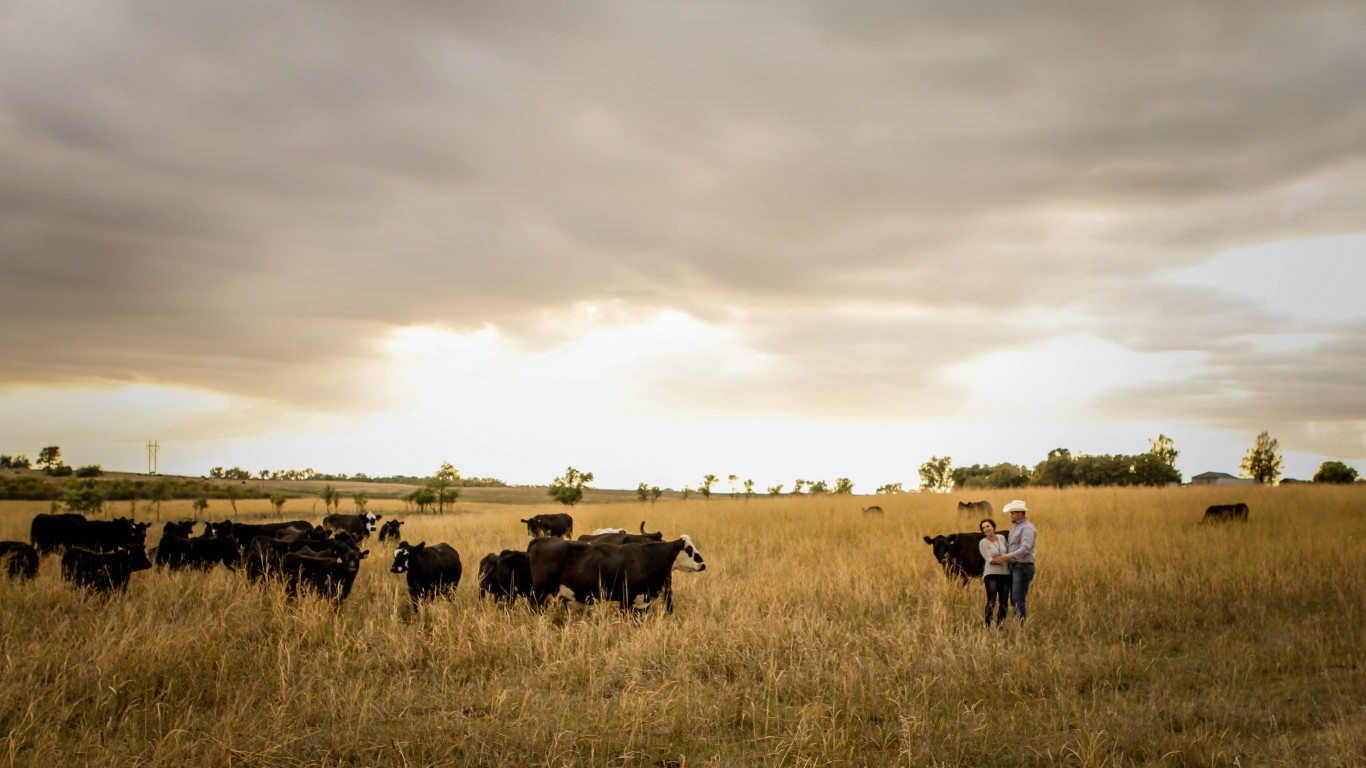
12. South Dakota
> Open-job to job-seeker ratio: 3.1-to-1
> Total open jobs: 31,000 (6.6% of all jobs – 19th lowest)
> Unemployed persons: 10,015 (2.1% of labor force – 10th lowest)
> Labor force participation rate: 68.4% of pop. age 16+ (4th highest)
[in-text-ad-2]

11. North Dakota
> Open-job to job-seeker ratio: 3.1-to-1
> Total open jobs: 31,000 (6.9% of all jobs – 20th highest)
> Unemployed persons: 9,994 (2.5% of labor force – 15th lowest)
> Labor force participation rate: 68.0% of pop. age 16+ (5th highest)
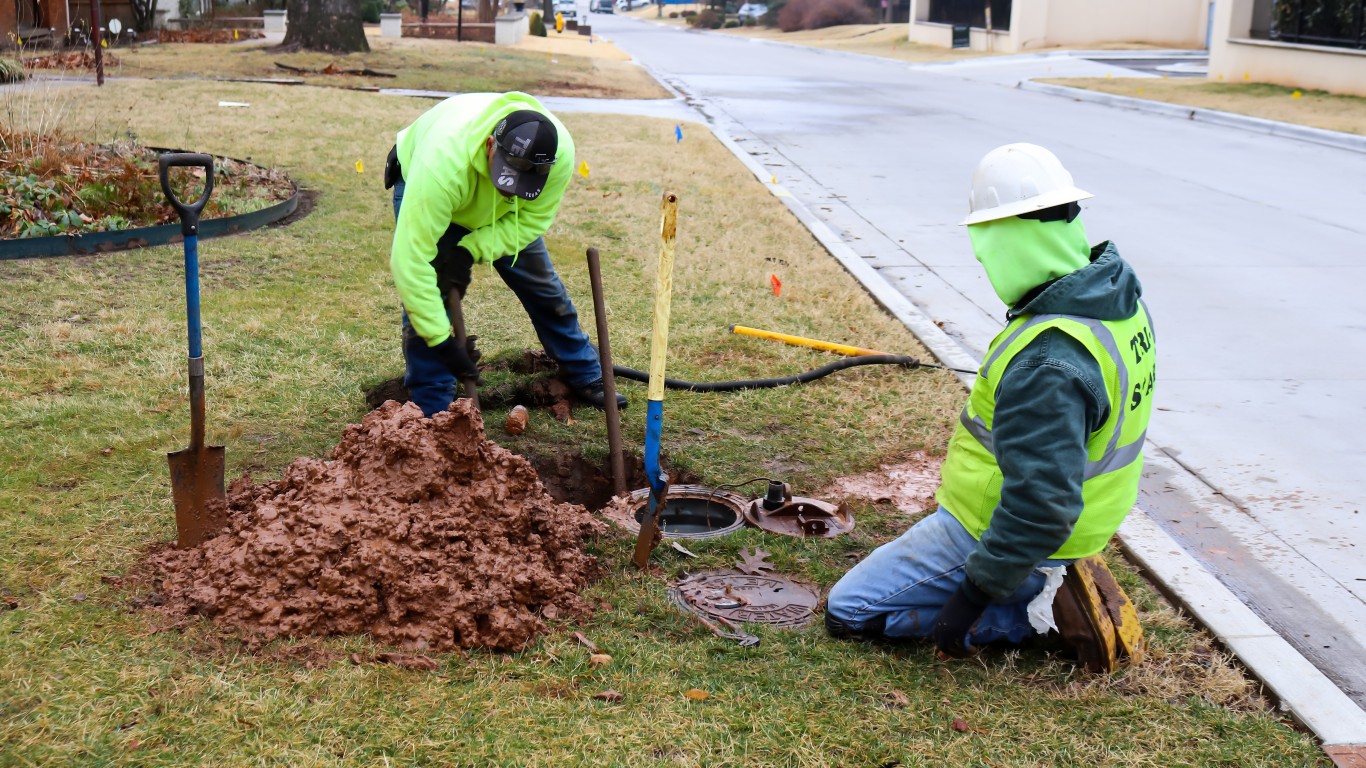
10. Oklahoma
> Open-job to job-seeker ratio: 3.2-to-1
> Total open jobs: 114,000 (6.5% of all jobs – 12th lowest)
> Unemployed persons: 35,558 (1.9% of labor force – 7th lowest)
> Labor force participation rate: 60.7% of pop. age 16+ (18th lowest)
[in-text-ad]
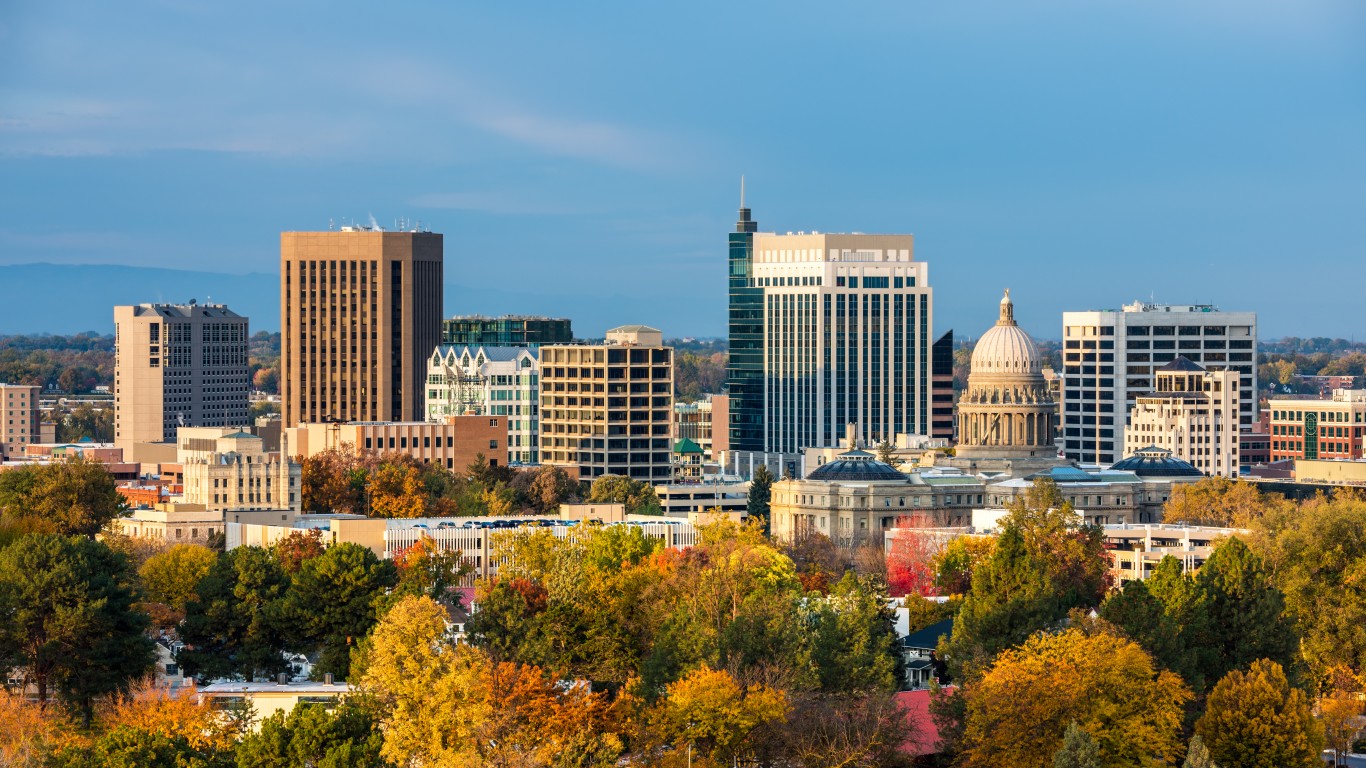
9. Idaho
> Open-job to job-seeker ratio: 3.3-to-1
> Total open jobs: 59,000 (7.0% of all jobs – 18th highest)
> Unemployed persons: 17,659 (1.9% of labor force – 7th lowest)
> Labor force participation rate: 62.3% of pop. age 16+ (25th highest)

8. Georgia
> Open-job to job-seeker ratio: 3.4-to-1
> Total open jobs: 379,000 (7.6% of all jobs – 5th highest)
> Unemployed persons: 112,610 (2.2% of labor force – 13th lowest)
> Labor force participation rate: 61.7% of pop. age 16+ (24th lowest)

7. Indiana
> Open-job to job-seeker ratio: 3.4-to-1
> Total open jobs: 240,000 (7.2% of all jobs – 11th highest)
> Unemployed persons: 70,290 (2.1% of labor force – 10th lowest)
> Labor force participation rate: 62.4% of pop. age 16+ (23rd highest)
[in-text-ad-2]

6. Wisconsin
> Open-job to job-seeker ratio: 3.6-to-1
> Total open jobs: 209,000 (6.7% of all jobs – 23rd lowest)
> Unemployed persons: 57,455 (1.9% of labor force – 7th lowest)
> Labor force participation rate: 66.3% of pop. age 16+ (10th highest)

5. New Hampshire
> Open-job to job-seeker ratio: 3.7-to-1
> Total open jobs: 57,000 (7.9% of all jobs – 3rd highest)
> Unemployed persons: 15,601 (2.1% of labor force – 10th lowest)
> Labor force participation rate: 65.1% of pop. age 16+ (12th highest)
[in-text-ad]

4. Vermont
> Open-job to job-seeker ratio: 3.8-to-1
> Total open jobs: 23,000 (7.2% of all jobs – 11th highest)
> Unemployed persons: 6,119 (1.9% of labor force – 7th lowest)
> Labor force participation rate: 61.2% of pop. age 16+ (21st lowest)
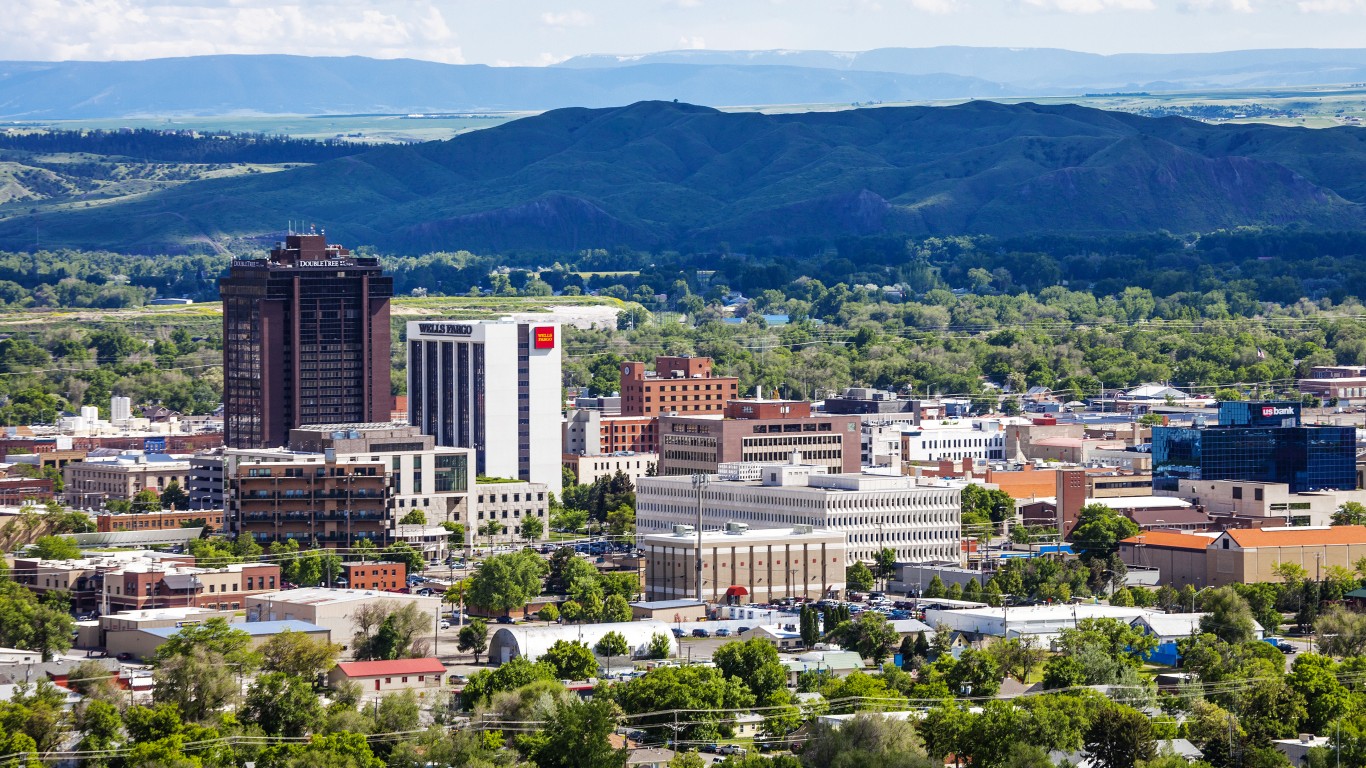
3. Montana
> Open-job to job-seeker ratio: 4.0-to-1
> Total open jobs: 41,000 (7.8% of all jobs – 4th highest)
> Unemployed persons: 10,294 (1.9% of labor force – 7th lowest)
> Labor force participation rate: 62.0% of pop. age 16+ (25th lowest)
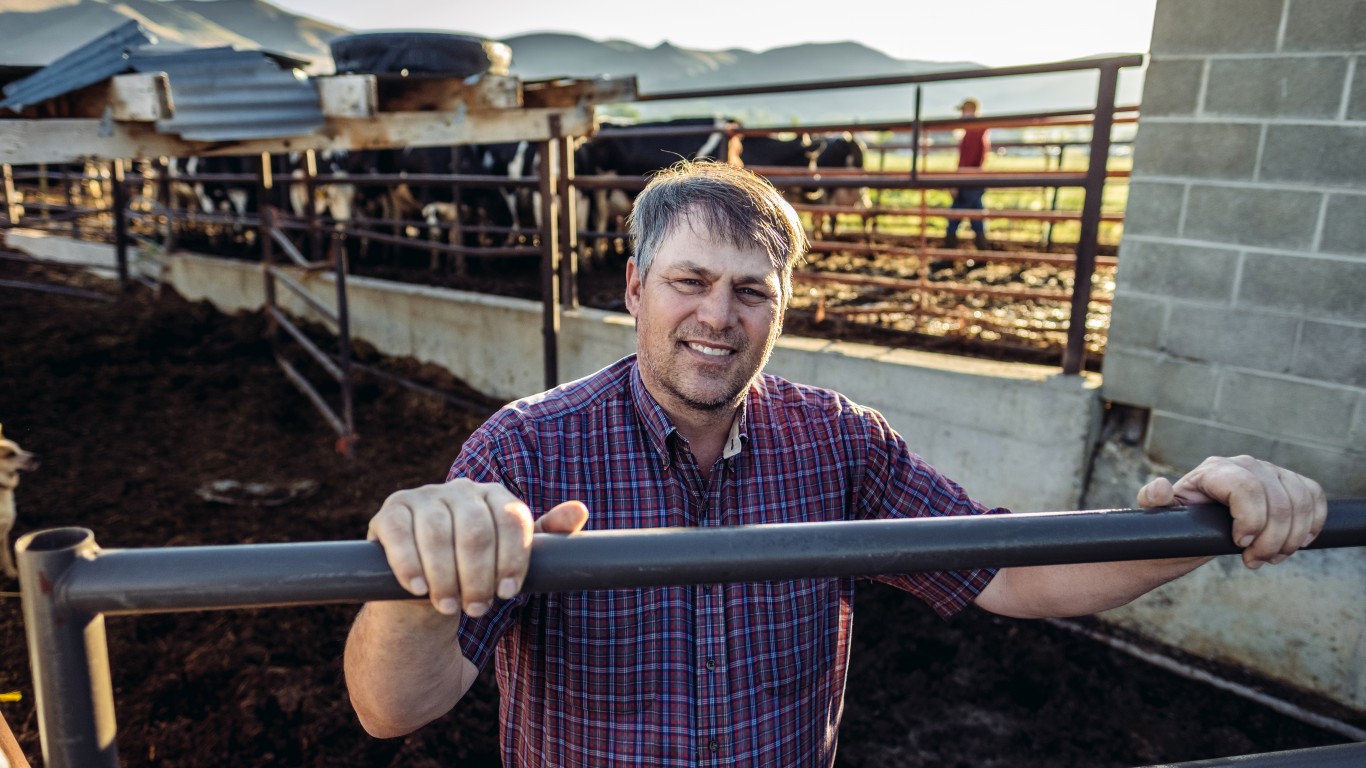
2. Utah
> Open-job to job-seeker ratio: 5.1-to-1
> Total open jobs: 117,000 (6.7% of all jobs – 23rd lowest)
> Unemployed persons: 22,972 (1.4% of labor force – 2nd lowest)
> Labor force participation rate: 68.8% of pop. age 16+ (the highest)
[in-text-ad-2]

1. Nebraska
> Open-job to job-seeker ratio: 6.0-to-1
> Total open jobs: 72,000 (6.6% of all jobs – 19th lowest)
> Unemployed persons: 12,038 (1.2% of labor force – the lowest)
> Labor force participation rate: 68.6% of pop. age 16+ (2nd highest)
Methodology
To determine the states where businesses are running out of workers, 24/7 Wall St. calculated the ratio of unfilled jobs to job seekers, or open jobs divided by the number of unemployed state residents. States are ranked by this ratio using data as of the end of November 2021, the most recent month of available jobs data.
Job openings are the number of positions – full-time, part-time, seasonal, short-term, or permanent – open on the last business day of a given month. In order to be counted as open, a job has to start within 30 days of when the employer can find a suitable candidate. Data on job openings are from the Job Openings and Labor Turnover Survey report from the Bureau of Labor Statistics.
Figures on unemployment, defined as residents who do not currently have a job but are actively seeking work, are for November 2021 and are from the BLS. The labor force participation rate, or the share of the 16 and older population who are either working or actively seeking a job, is also from the BLS and is for November 2021.
Take Charge of Your Retirement In Just A Few Minutes (Sponsor)
Retirement planning doesn’t have to feel overwhelming. The key is finding expert guidance—and SmartAsset’s simple quiz makes it easier than ever for you to connect with a vetted financial advisor.
Here’s how it works:
- Answer a Few Simple Questions. Tell us a bit about your goals and preferences—it only takes a few minutes!
- Get Matched with Vetted Advisors Our smart tool matches you with up to three pre-screened, vetted advisors who serve your area and are held to a fiduciary standard to act in your best interests. Click here to begin
- Choose Your Fit Review their profiles, schedule an introductory call (or meet in person), and select the advisor who feel is right for you.
Why wait? Start building the retirement you’ve always dreamed of. Click here to get started today!
Thank you for reading! Have some feedback for us?
Contact the 24/7 Wall St. editorial team.
 24/7 Wall St.
24/7 Wall St. 24/7 Wall St.
24/7 Wall St. 24/7 Wall St.
24/7 Wall St.

